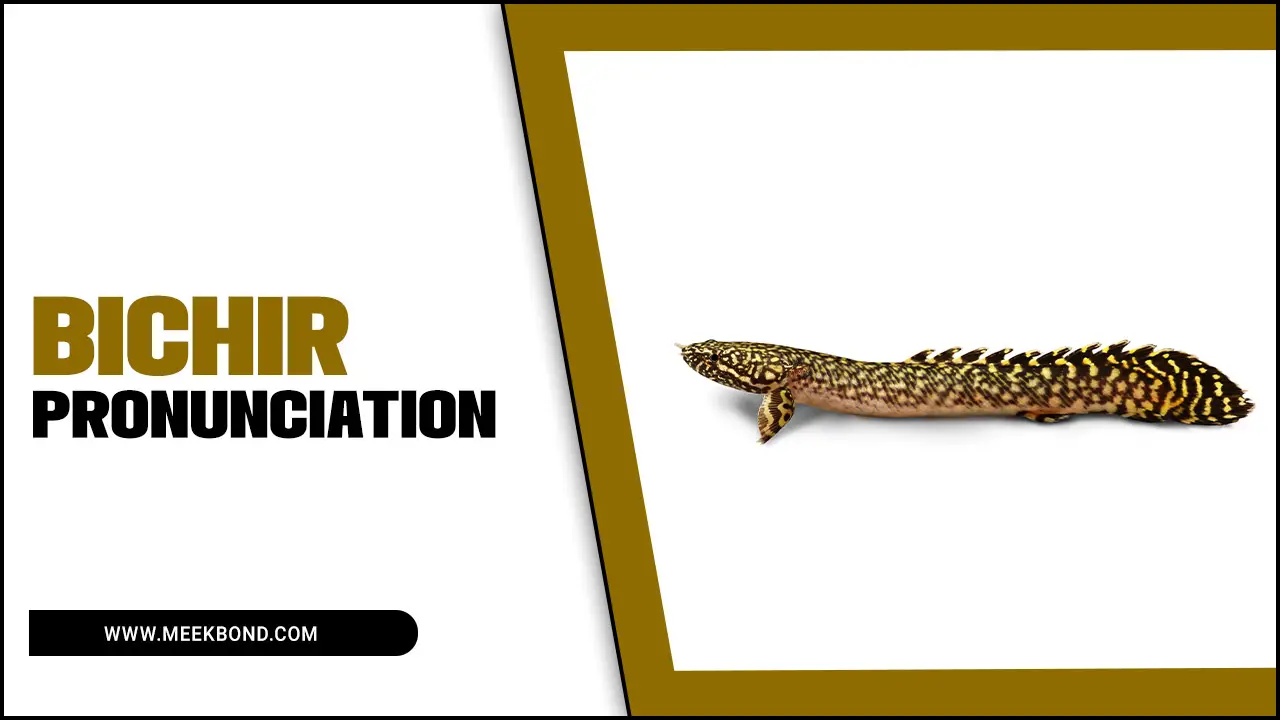Neon Tetras are among the most popular freshwater aquarium fish known for their vibrant colours and peaceful behaviour. While they may look alike, it is essential to understand the differences between male and female Neon Tetras to ensure a happy and healthy environment in your aquarium.
Differentiating between male and female Neon Tetras can be important for a few reasons. Identifying the males and females is crucial if you plan to breed Neon Tetras. This will allow you to pair them up correctly and increase the chances of successful breeding. Here we will dive into the key differences between Neon tetra male vs female. So if you are a proud owner of Neon Tetras or planning to buy them soon, keep reading.
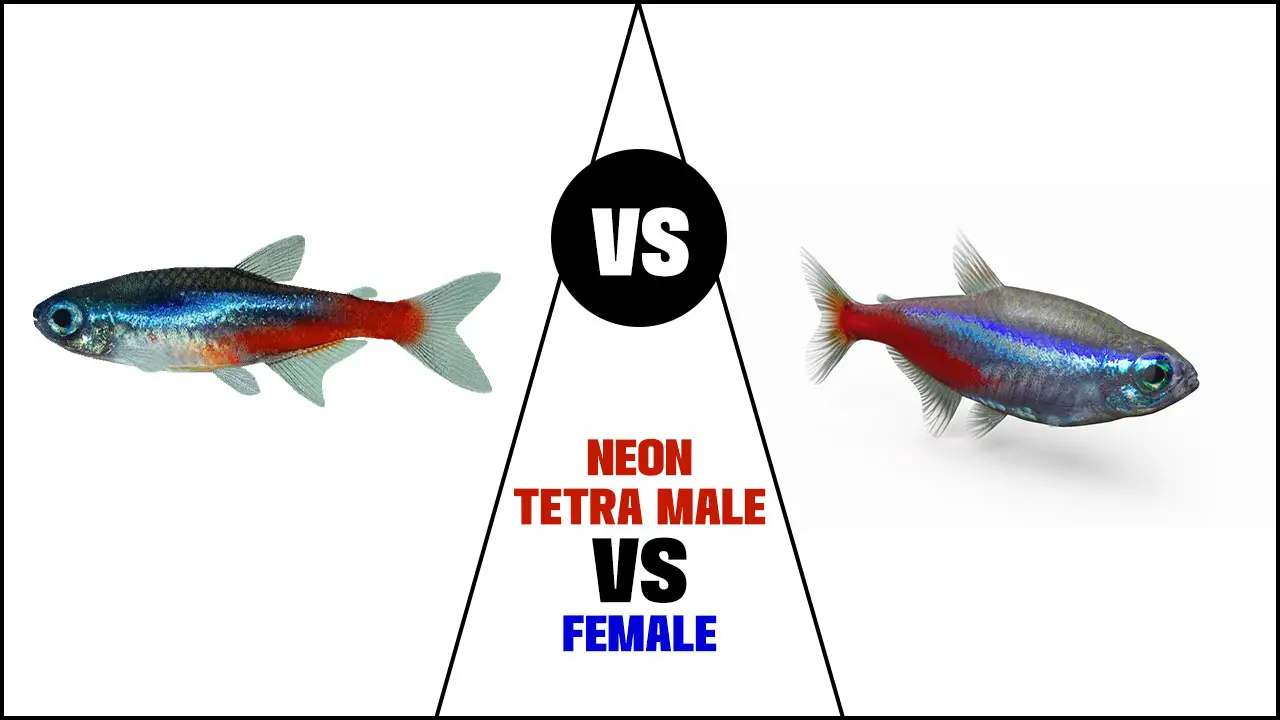
Differences Between Neon Tetra Male Vs Female
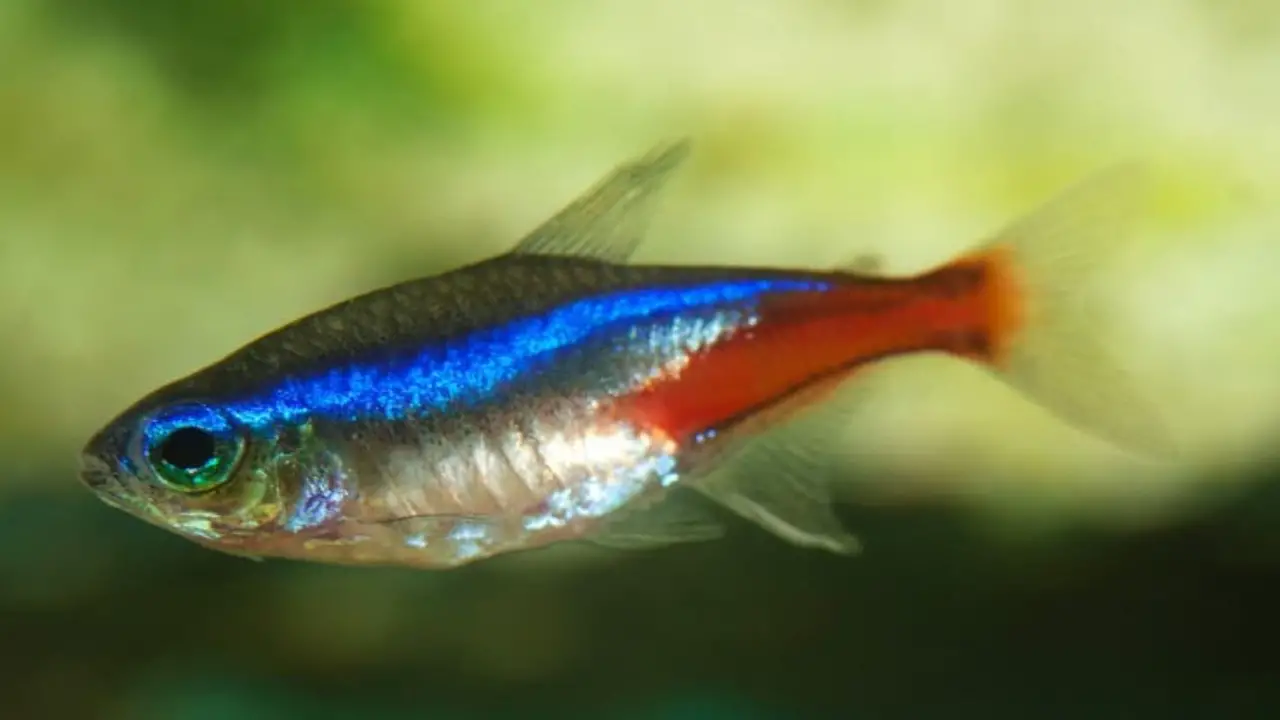
Female neon tetras are slightly larger than males. They have a rounder belly and may display a deeper red colouration on their lower body. In terms of behaviour, male neon tetras tend to be more active and swim around more, while females may be more stationary.
It can be difficult to determine the sex of neon tetras until they are ready to breed, as females will have a visibly swollen belly. Although subtle, there may be slight differences in the overall appearance and shape of male and female neon tetras. Below we discuss more in detail on the difference between neon tetra male vs female.
Body Shape
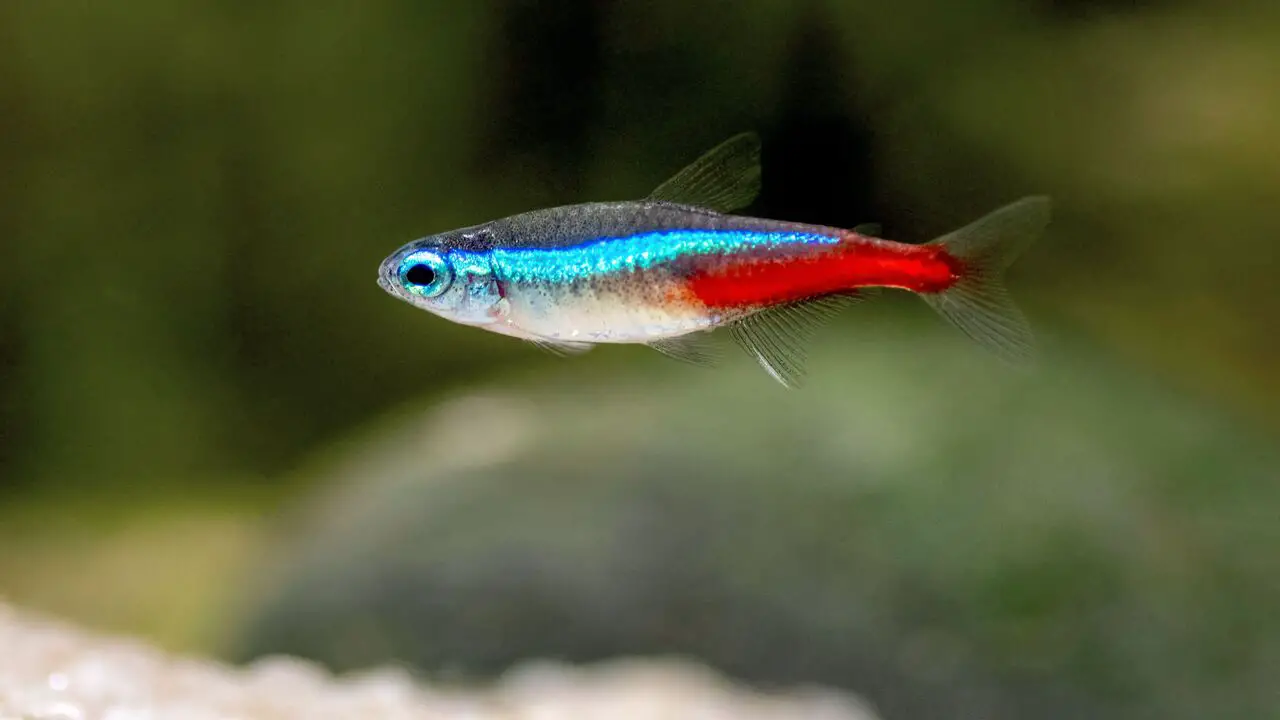
Male neon tetras have a slender and streamlined body shape, whereas females have a fuller and rounder body shape to accommodate egg development. The difference in body shape is most noticeable when viewed from above.
A trained eye can easily distinguish between male and female neon tetras based on body shape. Observing the fish during feeding time can also provide clues about their gender based on their behaviour. Neon tetras are fantastic additions to peaceful community tanks, with their vibrant colours and graceful body shapes.
Colouration
Male neon tetras exhibit vibrant colours, with a deeper blue colouration on their backs, while females have a more silver hue. Females may also have a slightly larger belly, especially when carrying eggs. Determining gender based on colouration can be subtle, so observing multiple individuals is best.
Sexing neon tetras is essential for breeding or maintaining a balanced population in an aquarium. Aquarists can ensure proper care and create peaceful community tanks by accurately identifying the males and females. The colourful and distinct colouration of neon tetras makes them fantastic additions to freshwater tanks.
Blue Stripe Shape
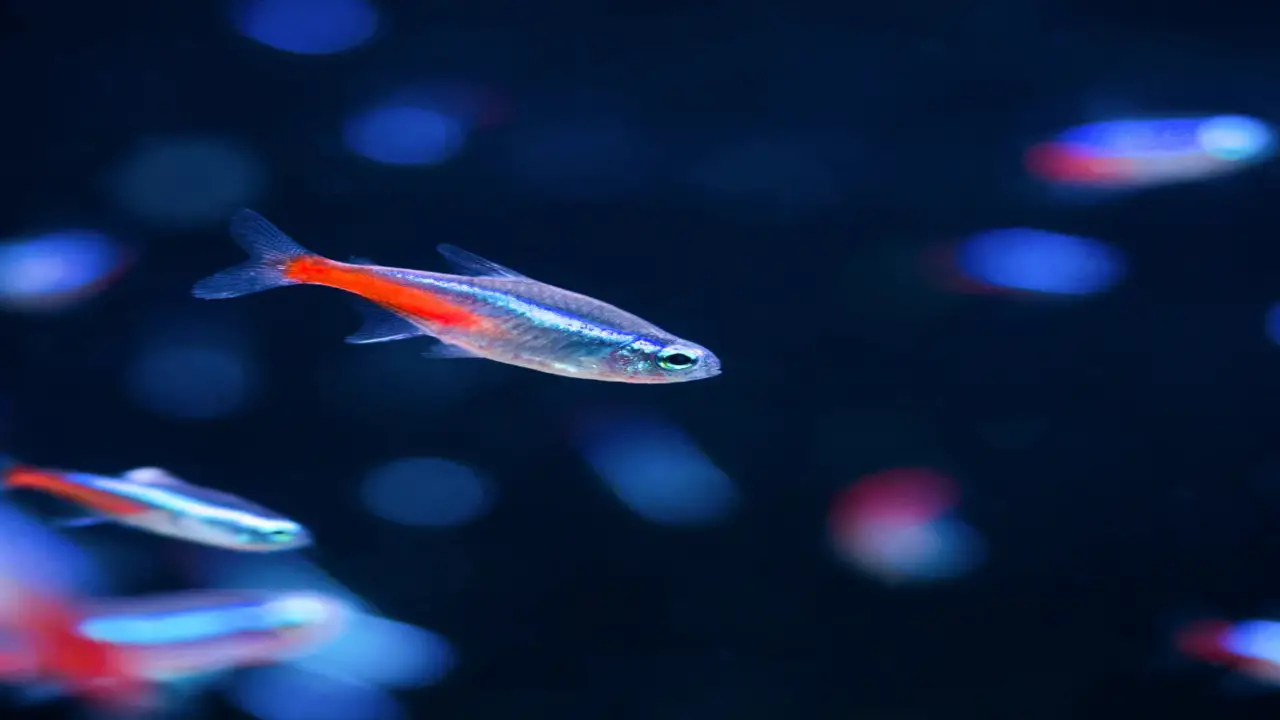
Male neon tetras typically have a straight blue stripe, while females have a slightly curved one. The blue stripe on females may also be thinner than that on males. Distinguishing between male and female neon tetras can be challenging without close inspection. Some breeders claim that males have brighter colours, but this is not always true. It’s important to note that the gender of neon tetras can only be determined once they reach sexual maturity.
Fin Length
Male neon tetras typically have longer and more pointed fins than their female counterparts. On the other hand, females have shorter and rounder fins. Spotting the difference in fin length can be challenging, especially among younger neon tetras.
The elongated fins of male tetras serve a purpose – they help attract potential mates during the breeding season. Some aquarium enthusiasts prefer to keep only one gender of neon tetras for a more visually appealing display. Adding these vibrant and mesmerizing fish to your aquarium will create a colourful and lively environment.
Belly Coloration
When distinguishing between male and female Neon Tetras, belly colouration is an easy tell. Male Neon Tetras sport a vibrant blue-green colouration on their bellies, while females have a shimmering silver-white hue.
This difference in colouration is a result of their distinct reproductive roles. Males use their bright bellies to attract females for mating purposes. So, if you’re looking to identify the gender of your Neon Tetras, simply take a close look at their belly colour.
Identifying The Sexes- Male Vs Female
When identifying the sexes of neon tetras, there are a few key things to look out for. Male neon tetras are generally slimmer and more colourful than their female counterparts. Females, on the other hand, have a rounder belly due to the presence of eggs. Additionally, males may have a longer, more pointed dorsal fin than females.
While it can be challenging to differentiate between the sexes, sometimes DNA testing is required for a more accurate identification. Understanding the gender of your neon tetras can be beneficial for breeding purposes and maintaining a healthy tank population.
Differences In Behavior Between Male And Female Neon Tetras
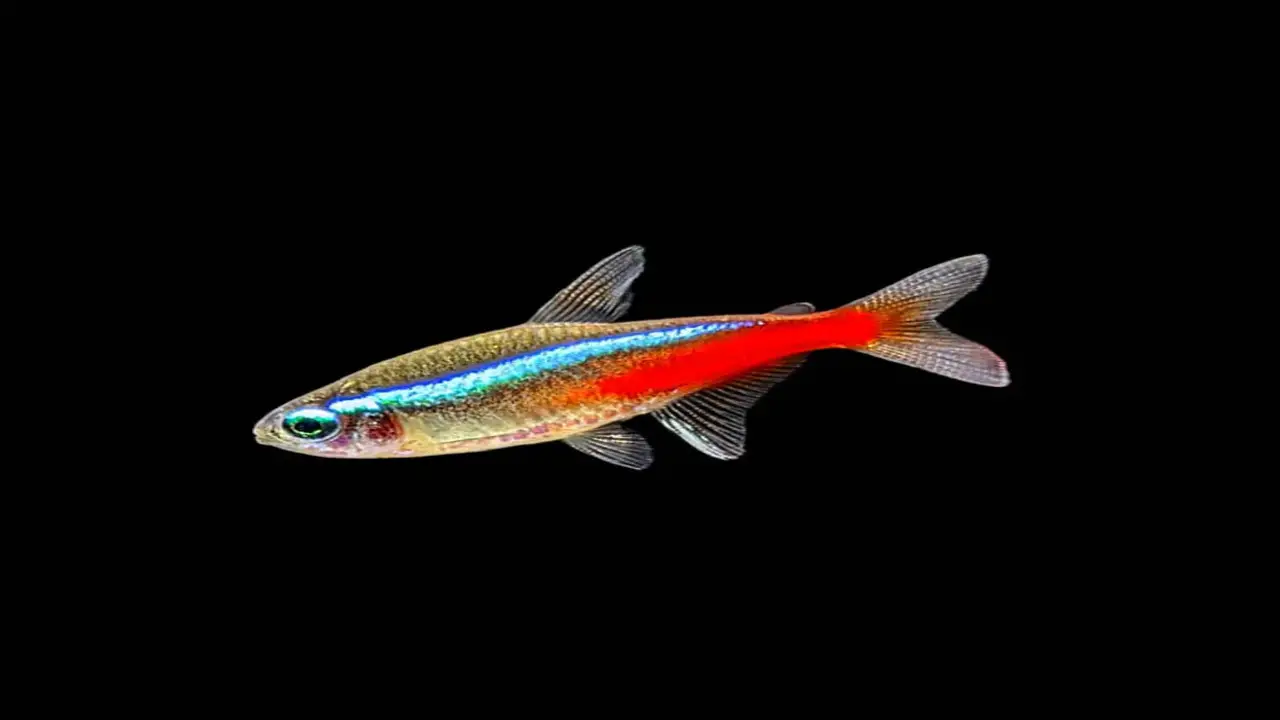
Male neon tetras exhibit more vibrant colours than their female counterparts, with brighter hues that catch the eye. Regarding body shape, males tend to be slimmer and sleeker, while females have a rounder and plumper appearance, especially when carrying eggs.
During the breeding season, male neon tetras can display more aggressive behaviour as they compete for the attention of females. On the other hand, females tend to school together more closely, creating a sense of unity among them. Another way to distinguish between genders is by examining the size and shape of the fish’s dorsal, anal, and pelvic fins.
How To Determine The Gender Of Neon Tetras?
Identifying the gender of Neon Tetras can be done by examining their physical characteristics. Male Neon Tetras are typically smaller and slimmer than females, with longer and more pointed fins. Females, on the other hand, have a rounder belly and less intense blue stripe colouration.
Observing these differences in physical attributes makes it possible to distinguish between male and female Neon Tetras. It is important to note that correctly identifying the gender of your fish can be crucial when it comes to breeding them or maintaining a healthy tank environment.
What Are The Benefits Of Knowing The Gender Of Neon Tetras?
Identifying the gender of neon tetras has several benefits for maintaining a thriving aquarium. It helps with breeding and population control. Male neon tetras have brighter colours and slimmer bodies, while females have rounder body and less vibrant hues.
Differentiating between male and female neon tetras also assists in selecting compatible tank mates. Males are more active and aggressive, making them suitable for other active species like guppies or mollies. Conversely, females are more docile and can coexist with less active species like cherry shrimp or snails.
Sexing neon tetras accurately requires knowledge and practice. It may be challenging without experience or close observation. However, mastering this skill greatly enhances your ability to care for these beautiful fish in your aquarium.
Are There Other Ways To Identify Male And Female Neon Tetras?
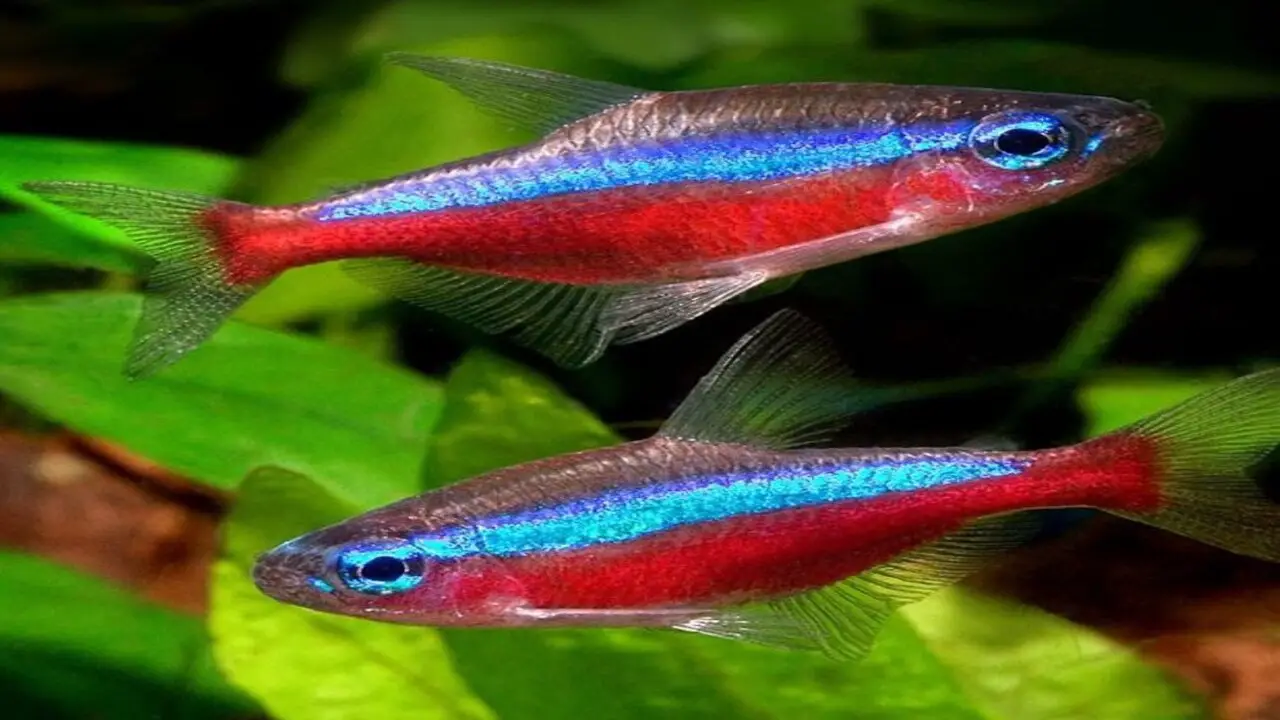
Distinguishing between male and female neon tetras can be challenging, as no external physical characteristics differentiate the two apart from colour variations. However, during the breeding season, females may appear more round-bodied due to carrying eggs. Experienced fish breeders can identify the sexes by examining their internal reproductive organs or through DNA testing.
Knowing the sex of your neon tetras is crucial for breeders and maintaining a gender-balanced aquarium. Too many males or females can cause aggression and disrupt social behaviour among the fish. Neon tetras are schooling fish and thrive in groups of six or more, preferably with their own kind. Therefore, it’s best not to keep just one male or female neon tetra in your aquarium.
Conclusion
Identifying the differences between neon tetra male vs female can be challenging but rewarding for aquarium enthusiasts. By observing factors such as body shape, colouration, fin length, and belly colouration, you can determine the gender of your Neon Tetras. Understanding the sex of your fish can provide various benefits, such as better breeding success and maintaining a harmonious tank environment.
Additionally, being aware of the distinct behaviours displayed by male and female Neon Tetras can enhance your overall understanding and enjoyment of these beautiful aquatic creatures. Remember to be patient and observant when determining the gender of your Neon Tetras, and consult with experts or reliable sources for further guidance.
Frequently Asked Questions
What Is A Bumblebee-Betta Fish?
A Bumblebee-Betta fish, also known as the Dario Dario or scarlet badis, is a small Betta fish with black and yellow stripes resembling a bumblebee. These vibrant fish typically grow up to 1.5 inches long and require a tank with at least 5 gallons of water and a heater to maintain the ideal temperature between 75-82°F.
How Long Do Bumblebee-Bettas Live?
Bumblebee-Bettas typically have a lifespan of around 2-3 years. Providing proper care and maintaining a healthy environment can help increase their longevity. Regular water changes, a balanced diet, and avoiding overfeeding are crucial for their well-being and to prevent diseases and stress.
What Is The Rarest Betta Fish?
The rarest betta fish, known as the “One Spot Mouthbrooder” or Betta Immaculata, is native to Borneo. It exhibits a unique breeding behavior where the male carries eggs and fry in its mouth. Other rare varieties include the Wild Betta species and color morphs like the Koi Betta or Galaxy Koi Betta.
What Is The Most Aggressive Betta Breed?
The Plakat or “Plakat Thai” betta is considered the most aggressive breed. Known for their short fins and bred for fighting ability, they are among the top contenders. Other aggressive betta breeds include the Halfmoon and Crowntail varieties.
How Many Bettas Can You Keep With Your Bumblebee Gobies?
Keeping multiple Bettas with bumblebee gobies is not recommended due to their different temperaments and requirements. Bumblebee gobies are social fish and should be kept in at least five groups. Keeping multiple Bettas together can lead to aggression and fighting.

Aquarium passion is all about connecting with the aquatic life and providing education to the public on the importance of these creatures. We showcase a wide variety of marine life through our exhibits as well as working with schools to provide unique learning opportunities for students of all ages.




